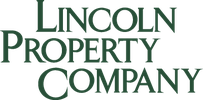Dynamic and Predictive AI Pricing for Parking involves adjusting the price of parking spaces based on various factors, including demand, time of day, location, and special events. This approach helps maximize revenue and improve parking space utilization. Here’s how ParqEx has implemented dynamic and predictive AI pricing for parking. Try the ParqEx dynamic and predictive AI pricing tool to optimize your parking.
What is the difference between Dynamic versus Predictive Pricing in the parking industry?
Dynamic pricing and predictive pricing are both pricing strategies that take into account various factors to set prices, but they differ in their approach and application:
Dynamic Pricing in Parking:
This pricing strategy involves adjusting prices in real time based on current market conditions. It takes into account factors such as parking demand, competitor pricing, time of day, and even external events to set flexible prices. The goal is to maximize revenue by responding quickly to the market.
Predictive Pricing in Parking:
Predictive pricing strategy, on the other hand, uses historical parking data and analytics to forecast future market trends and consumer behavior. It relies on predictive models to set parking spot availability, distribution between short-term vs. monthly parking spaces, and price (parking rates) that anticipate changes in parking demand or parking rates. This resource allocation and pricing strategy is more about planning and setting parking rates for the future rather than reacting in real time.
In essence, dynamic pricing in parking is reactive and adjusts prices based on what is happening in the market at the moment, while predictive pricing in parking is proactive, using data to predict and set parking space availability and prices for future scenarios. Both strategies aim to optimize parking asset utilization and pricing for revenue management but do so in different ways.
How does AI play a role in dynamic and predictive pricing models for the parking industry?
Dynamic Pricing and AI in Parking:
AI enhances dynamic pricing by analyzing real-time data to adjust parking allocation, resource availability, and parking rates (pricing) based on current market conditions. It uses machine learning, deep learning, and neural networks to process vast amounts of structured and unstructured data, identifying patterns that humans might not see. This allows parking businesses to use parking platforms like ParqEx to respond quickly to changes in parking demand, competitor pricing, and other factors, optimizing revenue and utilization.
Predictive Pricing and AI in Parking:
In predictive pricing, AI uses historical parking data and analytics to forecast future parking trends and consumer behavior. ParqEx’s predictive pricing algorithm employs predictive analytics and machine learning models to anticipate changes in parking demand and utilization, enabling parking businesses to plan resource allocation and set parking rates for future scenarios. This approach helps in making strategic pricing and resource allocation decisions that can lead to increased profitability and market competitiveness.
Both dynamic and predictive pricing strategies, benefit from AI’s ability to process and analyze data at a scale and speed beyond human capabilities, leading to more accurate and effective pricing strategies for the parking industry.
ParqEx’s implementation of Dynamic and Predictive pricing using AI
ParqEx first introduced predictive and dynamic pricing in May 2016 on the ParqEx marketplace platform for owners to optimize their parking asset allocation and pricing. Over the years, ParqEx’s utilization and pricing models have evolved adding new variables and data sources to further enhance the dynamic and predictive pricing models using AI. ParqEx has identified several variables/influencers that impact parking demand, utilization, and parking rates. Here’s a simplified example:
| Variable / Key Influencer(s) | Impact on Pricing | Example of Adjustment |
|---|---|---|
| Demand | High | Increase prices by 10% for every 10% increase in occupancy. |
| Time of Day | Medium | Peak hours (e.g., 8-10 am, 5-7 pm) have a 20% price increase. |
| Day of the Week | Low | Weekends have a 15% price increase compared to weekdays. |
| Location | High | Areas within 1 mile of downtown have a 30% price increase. |
| Special Events | Very High | Prices can double or more during major events. |
ParqEx’s AI encompasses a range of tools and services designed to empower parking owners, operators, managers, businesses, and individuals to make intelligent decisions. These tools leverage artificial intelligence to enhance various applications with capabilities such as natural language processing, computer vision, machine learning, and conversational AI. ParqEx’s AI is used to process various data sources to track variables that impact parking space utilization and pricing.
Here is an example of ParqEx AI parsing data sources for variables/influencers and triggering parking rate and/or utilization changes for a parking spot using dynamic & predictive pricing models:
| Variable / Key Influencer(s) | Description | Effect on Pricing |
|---|---|---|
| Demand | The number of people looking for parking spaces in an area. | Higher demand increases prices; lower demand decreases prices. |
| Time of Day | The specific hours during the day. | Peak hours (like morning and evening rush) see higher prices; off-peak hours have lower prices. |
| Day of the Week | Whether it’s a weekday or weekend. | Weekends might have higher prices due to leisure activities; weekdays may vary based on local business activity. |
| Location | Proximity to high-demand areas like downtown or attractions. | Closer to high-demand areas increases prices; farther away decreases prices. |
| Special Events | Local events like concerts or sports games. | Prices can significantly increase during events due to higher demand. |
| Seasonality | Seasonal changes affecting parking demand. | Prices may increase during tourist seasons or special holiday periods. |
| Weather | Impact of weather conditions on parking demand. | Bad weather might lower prices due to decreased demand; good weather could increase prices, especially in scenic areas. |
| Parking Duration | Length of time a parking spot is used. | Longer durations might have discounted rates, while short-term parking could be priced higher. |
| Type of Parking Spot | Standard, compact, electric vehicle (EV) charging, etc. | Specialized spots like EV charging might be priced higher than standard spots. |
Join the 10K+ properties already optimizing their parking:
ParqEx’s Dynamic and Predictive AI Pricing Platform
Optimize Your Parking
Here are a few options try ParqEx’s Dynamic and Predictive AI pricing platform to optimize your parking:
1) Try the FREE AI tool below. Select variables that the ParqEx Dynamic and Predictive AI pricing platform should use to optimize your parking. OR
2) Schedule a meeting with our team for a demo to learn more. Click here to schedule a demo. OR
3) Email us at [email protected] to schedule a demo.
READY TO TEST DRIVE?
ParqEx’s Dynamic and Predictive AI Pricing Platform to optimize your parking by selecting all variables that should be considered by AI to optimize parking spot utilization and pricing at your parking location.
NOTE: Once the information has been processed, we will reach out to you to discuss the results.
TESTIMONIAL
“Dynamic and predictive pricing powered by AI is not just a convenience; it’s a transformative force in real estate. By optimizing space and reducing congestion, AI-driven parking solutions are redefining the value of properties and enhancing the urban landscape for future generations.”
Vijay Konkimalla – Vice President, Global Head of Analytics at Newmark





























